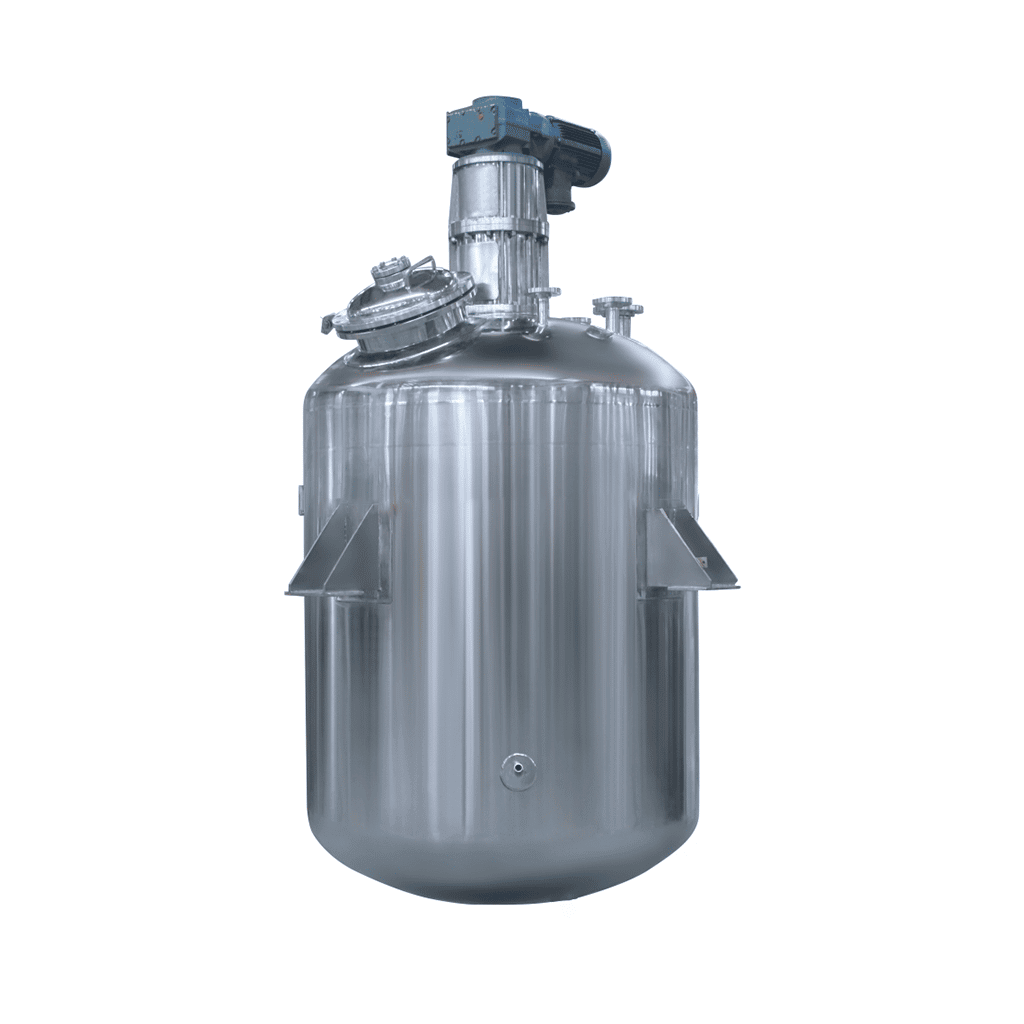
-24-1.jpg)
Stainless Steel Reactor
Stainless Steel Reactor: used in dairy products, sugar, beverages, and other fields
Material
stainless steel (316, 304)
Capacity (L)
10-10000+
Mixing system
anchor, paddle, frame and others
Heating system
electric heating, oil heating and others
A stainless steel reactor is a stainless steel container equipment. The stainless steel reactor consists of a kettle body, a kettle lid, a stirrer, a jacket, a bracket, a transmission device, a shaft seal device, etc. Materials and openings can be made according to user needs and process requirements. Stainless steel reactors are mainly used for stirring, homogenizing, and mixing storage of dairy products, sugar, beverages, food, and various pharmaceuticals.
Request a quoteStainless steel reactor has the characteristics of fast heating, high-temperature resistance, and corrosion resistance. In order to ensure the normal operation of operating equipment, its operating requirements and production processes must be understood.

Stainless steel reactor operating requirements and production process
1.The stirrer of the stainless steel reactor needs to be turned on before feeding. After confirming that there is no noise, add the materials completely into the stainless steel reactor.
2.Before opening the steam valve of the stainless steel reactor, be sure to remember to open the air valve first, and then open the air inlet valve. The process of opening the steam valve should be done slowly to preheat the jacket and gradually increase the pressure. The pressure inside the sheath must not exceed the specified value.
3.During operation, the cooling valve and steam valve in the stainless steel reactor cannot be started at the same time.
4.During the operation of the stainless steel reactor, it is necessary to check the operation of the stainless steel reactor at any time. If any abnormality is found, stop the vehicle immediately and repair it. When cleaning the stainless steel reactor, do not scrub the stainless steel reactor with alkaline water.
5.During the cover installation process:
Prevent the sealing surfaces between the body and the cover from colliding with each other. When in use, the pot cover is placed in a fixed position on the pot body according to its fixed position. When in use, tighten the main nut. Must be tightened diagonally symmetrically during use.
6. Use even force when working. When using, do not tilt the cover to one side. This can achieve a good sealing effect to a certain extent. The front and back nut accessories only rotate the front and back nuts in two turns. The sealing surfaces must not rotate relative to each other.

Routine maintenance of stainless steel reactor
1.Establish and improve the inspection and maintenance system:
Not only stainless steel reactors, but all production and processing machinery and equipment should have detailed, timely, and well-maintained maintenance plans.
2.Check the mixer carefully:
The mixer of the stainless steel reactor is the power mechanism responsible for mixing the animal materials. Since long-term rotation will generate a certain centrifugal force, it is necessary to check whether the screws on the connecting devices such as the mixer are tightened. If there is any looseness, it should be dealt with and detected in time to ensure the safety and reliability of the mixer.
3.Stainless steel reactor lining:
Drive components, seals, and agitator components must be carefully inspected, as failure of any component will immediately affect the operation of the stainless steel reactor system.
4.Clean the debris in the stainless steel reactor in time;
When cleaning, do not use hard, sharp metal rods. Flexible tools such as wooden tools, intact bamboo sticks, and plastic rods should be used to remove debris.




